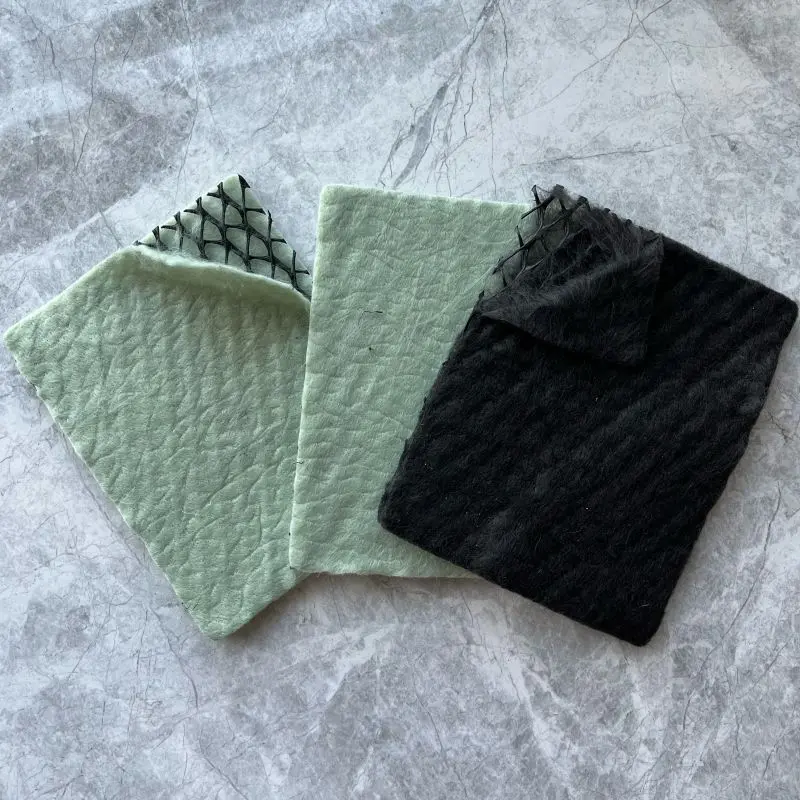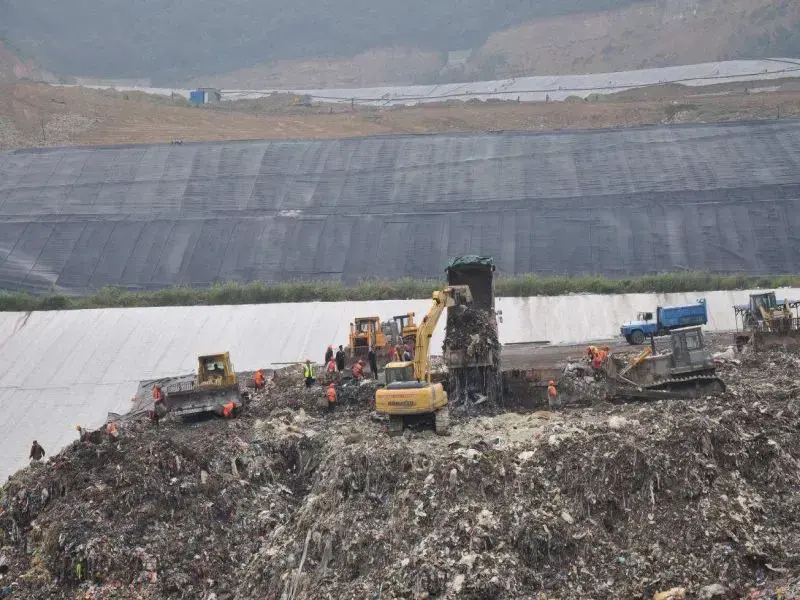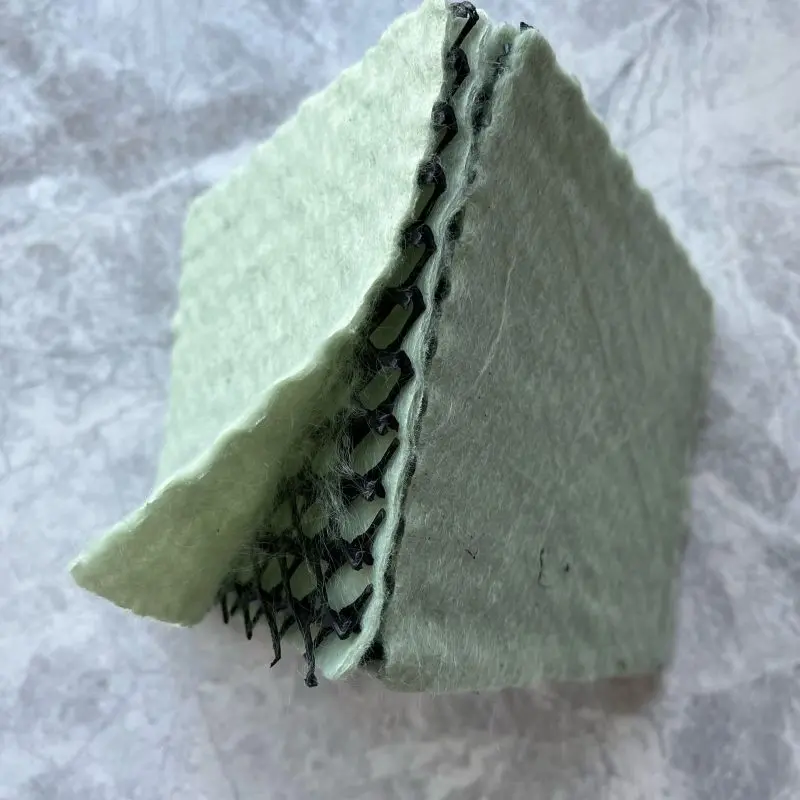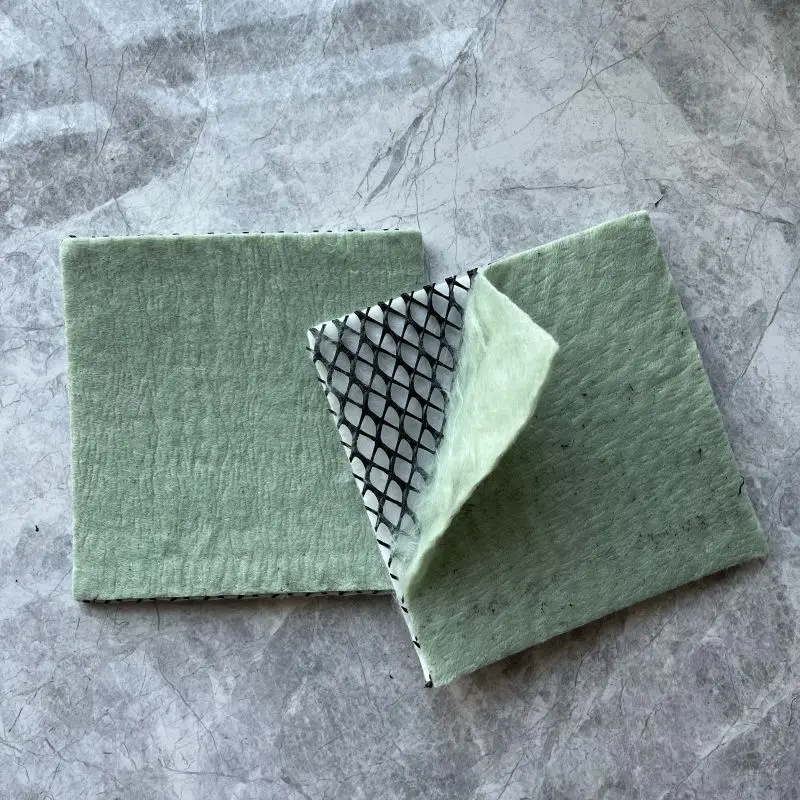What is a Geocomposite Drainage Net?

A drainage net, also known as a geocomposite drainage net, is a synthetic material engineered with a network of interconnected voids, typically made from polymers like high-density polyethylene (HDPE). These nets facilitate the efficient drainage of liquids while preventing the ingress of fine soil particles, ensuring optimal hydraulic performance.
Functions and Applications of Drainage Nets:
1, Liquid Management: Drainage nets efficiently collect and channel leachate, a highly contaminated liquid formed within landfills due to the decomposition of organic waste. By directing leachate away from the waste mass, these nets prevent its accumulation, reducing the risk of environmental contamination.
2, Groundwater Protection: Contaminants leaching from landfill waste can infiltrate surrounding groundwater, posing significant environmental hazards. Geocomposite drainage nets act as a barrier, intercepting leachate flow and preventing its migration into groundwater aquifers, safeguarding these vital resources.
3, Gas Venting: In addition to liquid management, drainage nets assist in the controlled release of gases generated during waste decomposition, such as methane and carbon dioxide. Proper gas venting mitigates the risk of gas buildup within the landfill, minimizing potential safety hazards and environmental impacts.
4, Erosion Control: By facilitating the rapid evacuation of water from landfill slopes and surfaces, drainage nets help prevent erosion and maintain the stability of landfill infrastructure. This erosion control function is critical for preserving the integrity of containment systems and minimizing the risk of slope failures.
5, Longevity and Durability: Geocomposite drainage nets are designed to withstand harsh environmental conditions and prolonged exposure to aggressive substances like leachate. Their durability ensures the longevity of landfill liner systems, providing reliable performance over extended operational lifespans.
6, Landfill Liner Systems and Primary Products:
Landfill liner systems comprise multiple layers of engineered materials designed to contain and isolate waste from the surrounding environment. Key components of these systems include geomembranes, geosynthetic clay liners (GCLs), geotextiles, and geocomposite drainage nets. These products work in synergy to create impermeable barriers, effectively confining waste and preventing environmental contamination.
Role of Geocomposite Drainage Nets in Landfill Liner Systems

Within landfill liner systems, geocomposite drainage nets serve as vital elements in the leachate collection and removal process. Positioned above the primary geomembrane layer and below the waste fill, these nets intercept and convey leachate to collection points, ensuring efficient drainage and minimizing the risk of liner damage or failure. By enhancing the overall hydraulic performance of landfill systems, drainage nets contribute to the sustainable management of waste while safeguarding environmental resources.
Main functions of geonets in landfill liner

1, Leachate Collection and Removal:
Geocomposite drainage nets efficiently collect leachate, a highly contaminated liquid formed within landfills. They provide a pathway for leachate to flow, preventing its accumulation within the waste mass.
2, Groundwater Protection:
Acting as a barrier, drainage nets intercept leachate flow and prevent its migration into groundwater aquifers. By preventing groundwater contamination, they safeguard vital water resources and ecosystems.
3, Erosion Control:
Geocomposite drainage nets facilitate the rapid evacuation of water from landfill slopes and surfaces. By preventing water buildup, they help control erosion and maintain the stability of landfill infrastructure.
4, Protection of Liner System:
Drainage nets protect the primary geomembrane layer from damage caused by hydrostatic pressure and abrasive forces. They enhance the longevity and durability of the entire landfill liner system.
5, Enhanced Hydraulic Performance:
By providing efficient drainage pathways, drainage nets optimize the hydraulic performance of landfill systems. They ensure proper leachate removal, reducing the risk of liner failure and environmental contamination.
6, Integration with Other Liner Components:
Drainage nets work synergistically with other components of landfill liner systems, such as geomembranes and geotextiles. Their integration enhances the overall effectiveness and reliability of the liner system in containing waste and preventing environmental impacts.
7, Sustainable Waste Management:
By facilitating effective leachate management and environmental protection, drainage nets contribute to sustainable waste management practices. They support the safe disposal of waste while minimizing adverse impacts on surrounding ecosystems and communities.
In summary, geocomposite drainage nets fulfill multiple critical functions within landfill liner systems, ranging from leachate management and groundwater protection to erosion control and regulatory compliance. Their importance in ensuring the long-term integrity and environmental sustainability of landfills cannot be overstated.
Product specifications we can supply

As we can see from the picture, a geocomposte drainage net usually includes three layer,
1, the middle is usually black HDPE geonet, the thickness of the middle geonet can be 4mm, 5mm,5.5mm,6mm,6.3mm,6.5mm,7mm,7.5mm, you can choose the thickness according to your projects needs.
2, the two sides are usually filament needle punched geotextile fabrics, the Gram weight of geofabrics can be 150g/㎡ or 200g/㎡ according to your needs.
3, we can also customized the color, white, green, black, or you send us the color you need.
If you are interested in this products, please fell free to contact me,
Phone/Wechat/Whatsapp: 0086-18853127527
email: export@hygeosynthetics.com

897.webp)
942.webp)
237.webp)